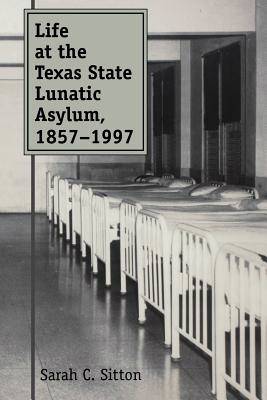
Bedankt voor het vertrouwen het afgelopen jaar! Om jou te bedanken bieden we GRATIS verzending (in België) aan op alles gedurende de hele maand januari.
- Afhalen na 1 uur in een winkel met voorraad
- In januari gratis thuislevering in België
- Ruim aanbod met 7 miljoen producten
Bedankt voor het vertrouwen het afgelopen jaar! Om jou te bedanken bieden we GRATIS verzending (in België) aan op alles gedurende de hele maand januari.
- Afhalen na 1 uur in een winkel met voorraad
- In januari gratis thuislevering in België
- Ruim aanbod met 7 miljoen producten
Zoeken
Omschrijving
The nineteenth-century "cult of curability" engendered the optimistic belief that mental illness could be cured under ideal conditions-removal from the stresses of everyday life to asylum, a pleasant, well-regulated environment where healthy meals, daily exercise, and social contact were the norm. This utopian view led to the reform and establishment of lunatic asylums throughout the United States. The Texas State Lunatic Asylum (later called the Austin State Hospital) followed national trends, and its history documents national mental health practices in microcosm. Drawing on diverse sources-patient records from the nineteenth century, papers and reports of the institution's various superintendents, transcripts of interviews of former employees, newspaper accounts, personal memoirs, and interviews-Sarah C. Sitton has recreated what life in "our little town" was like from the institution's opening in 1861 to its de-institutionalization in the 1980s and 1990s. For more than a century, the asylum community resembled a self-sufficient village complete with its own blacksmith shop, icehouse, movie theater, brass band, baseball team, and undertakers. Beautifully landscaped grounds and gravel lanes attracted locals for Sunday carriage drives. Patients tended livestock, tilled gardens, helped prepare meals, and cleaned wards. Their routines might include weekly dances and religious services, as well as cold tubs, paraldehyde, and electroshock. Employees, from the superintendent on down, lived on the grounds, and their children grew up "with inmates for playmates." While the superintendent exercised almost feudal power, deciding if staff could date or marry, a multigenerational "clan" of several interlinked families controlled its day-to-day operations for decades. With the current emphasis on community-based care for the mentally ill and the negative consequences of de-institutionalization increasingly apparent, the debate on how best to care for the state's-and the nation's-mentally ill continues. This examination offers historical and practical insights which will be of interest to practitioners and policy makers in the field of mental health as well as to individuals interested in the history of the state of Texas.
Specificaties
Betrokkenen
- Auteur(s):
- Uitgeverij:
Inhoud
- Aantal bladzijden:
- 208
- Taal:
- Engels
- Reeks:
- Reeksnummer:
- nr. 82
Eigenschappen
- Productcode (EAN):
- 9781603447393
- Verschijningsdatum:
- 16/07/2012
- Uitvoering:
- Paperback
- Formaat:
- Trade paperback (VS)
- Afmetingen:
- 152 mm x 229 mm
- Gewicht:
- 303 g

Alleen bij Standaard Boekhandel
+ 61 punten op je klantenkaart van Standaard Boekhandel
Beoordelingen
We publiceren alleen reviews die voldoen aan de voorwaarden voor reviews. Bekijk onze voorwaarden voor reviews.









